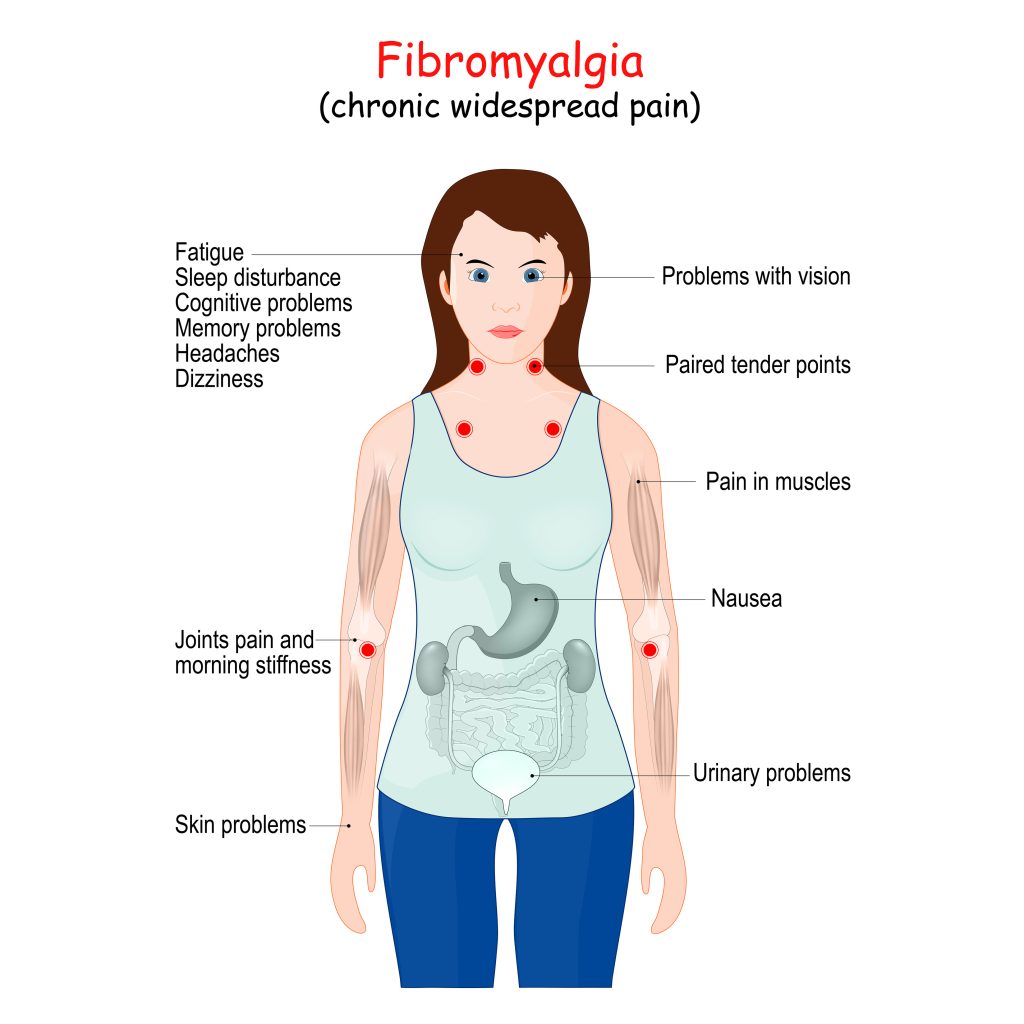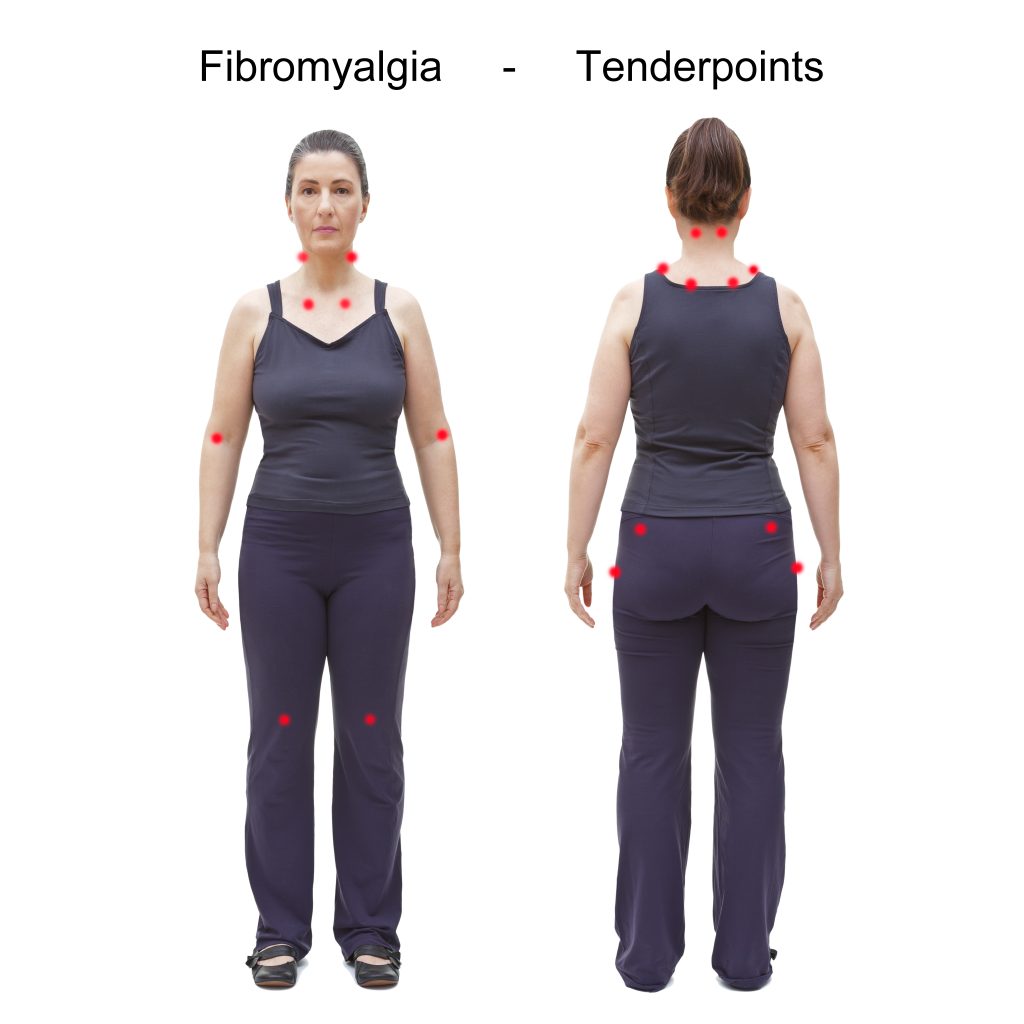Fibromyalgia is a condition that impacts the body’s central nervous system. Also, if left untreated, fibromyalgia can lead to other health problems, including fatigue, sleep problems, and depression.
In this article, we will discuss fibromyalgia in depth and provide tips on how to cope with the condition.
What Is Fibromyalgia?
Fibromyalgia is an illness that causes widespread pain throughout the body. It includes difficulty sleeping, extreme exhaustion, and emotional and mental discomfort. The pain threshold of those with fibromyalgia may be higher than those without the condition. As a result, the individual experiences pain in an unnatural manner.
What Are Usually The First Signs Of Fibromyalgia?
Primary fibromyalgia symptoms include:

- Fatigue. Many people with fibromyalgia report sleeping for long periods, then feeling exhausted when they wake up. Sleeping can be challenging with fibromyalgia, and many people also have other sleep problems.
- Widespread pain. Pain from fibromyalgia usually lasts three months or longer and is dull and persistent. A widespread pain pattern includes symptoms on both sides of the body and above and below the waist.
- Cognitive Difficulties. Reduced cognitive function, including attention, focus, and concentration, comes with fibromyalgia.
Other symptoms may include:
- Discomfort and stiffness throughout the body
- Fatigue and exhaustion
- Cognitive, memory deficits and having trouble concentrating
- Sleep difficulty
- Headaches and migraines
- TMJ dysfunction
- Irritable Bowel Syndrome
What Is The Main Cause Of Fibromyalgia?
It is unknown what causes fibromyalgia. Although there’s a link between brain chemistry and how the nervous system handles pain.
It’s a combination of genetics and:
- infection
- trauma
- stress
Fibromyalgia can arise in those who have experienced significant psychological or bodily stress. Stress, like trauma, can leave physical scars that are difficult to overcome. Hormone levels shift when stress happens, which could explain fibromyalgia.
What Triggers Fibromyalgia?
Pain and exhaustion are just two symptoms that might flare up unexpectedly. Likewise, some of the things that can trigger or exacerbate flares are:
- Extreme weather conditions
- Overwork
- Emotional strain
- Traveling
- Modifications to therapy
Each person has their own unique set of triggers. Therefore, knowing your triggers can help reduce their impact on your life and prepare you for future flares.
What Are The 18 Tender Points Of Fibromyalgia?
There are 18 specific tender points located at nine bilateral locations.
Tender points occur on both the right and left sides of the body at these nine locations:
- Occiput: Located near the base of the skull (where the neck muscles attach).
- Low cervical: C5-C7 (front lower neck), at the anterior aspect of the inter-transverse spaces.
- Trapezius: In the middle of the upper border, midway between neck and shoulder.
- Supraspinatus: A little above the scapula spine at its medial border.
- Second Rib: Just lateral to the junctions on upper surfaces (edge of the upper breast bone) at the second costochondral junction.
- Lateral epicondyle: It’s 2 cm below the side bone at the elbow, distal to the epicondyles.
- Gluteal: A fold of muscle in the upper outer quadrants of the buttocks (upper outer buttock).
- Greater trochanter: Behind the trochanteric prominence (hip bone).
- Knee: Above the knee, at the medial fat pad proximal to the joint line.

How Do I Know If My Pain Is Fibromyalgia?
No single test can diagnose fibromyalgia with 100% accuracy. Clinical signs and a thorough exam help diagnose fibromyalgia. More likely, someone with this condition will experience pain than the general population. Healthcare experts can tell you how many tender spots are active on your body.
There are several ways your doctor can diagnose you, including:
- Your personal and family history, as well as your current symptoms
- Physical examination, imaging studies, and laboratory analysis to rule out secondary causes. It’s a good idea to do a blood test to rule out conditions like anemia and thyroid disease.
- Chronic pain that has persisted for more than three months
- Disturbed sleep patterns, a lack of energy, and mental fog are all examples of physical manifestations.
- The number of areas on your body where you’ve had pain in the last week
- At least 11 of 18 specific spots have pain and tenderness around your body

What Is The Most Effective Treatment For Fibromyalgia?
There’s no cure for fibromyalgia because no one knows what causes it. However, there are various options for relieving symptoms, including drug-free and conventional approaches. Unfortunately, not all medical professionals are well-versed in fibromyalgia and its therapy. Treatment for this condition comes in many forms. These approaches may include medication, lifestyle adjustments, psychotherapy, and alternative medicine.
Education
Knowing the nature of your illness is crucial for effectively treating it. Understanding your condition (what causes flares, how to deal with pain, etc.) gives you more control. It’s easier to manage your fibromyalgia when you learn about it.
Relaxation
Stress may be making your symptoms worse. Plan your day and prioritize what has to get done. Practice relaxation strategies like taking a walk or listening to music. Avoiding stress sources can help you manage your stress.
Sleep
Getting a decent night’s sleep is crucial if you have fibromyalgia. The severity of your symptoms may increase if you aren’t getting enough or good quality sleep. Consult your doctor about treatment options if you’re experiencing trouble sleeping.
Healthy Lifestyle
Eating well can assist with fibromyalgia symptoms. Doing what you enjoy can also help.
Medication
Paracetamol and anti-inflammatory medications are not effective treatments for fibromyalgia pain. However, anti-epileptic or antidepressant drugs help them manage their pain or other symptoms. In addition to treating epilepsy, pregabalin and gabapentin are also effective for pain.
Acupuncture
There is evidence that acupuncture helps people with fibromyalgia feel less pain and stiffness. But studies show that the effects don’t last long (up to a month). You must go back for more sessions to keep any possible benefits.
Is Physical Therapy Good For Fibromyalgia?
TENS
TENS devices use wires and adhesive pads to treat pain. It stimulates nerves and reduces pain by sending tiny electrical currents to the skin. It’s best to check with your physician to see if a TENS unit is suitable for you.
Pain Management
Heat packs, cold packs, and gentle exercise can all help ease muscular discomfort and inflammation. You need to experiment with many approaches until you find the one that works best for you.
Exercise
Exercise can help with fibromyalgia symptoms like pain, exhaustion, and sleep problems. Choosing an activity, you’ll enjoy is the key to staying active. A hydrotherapy pool can be a comforting and welcoming first step toward recovery for many people. For best results, start slowly and increase the intensity.
Myofascial Release
Myofascial release applies mild, sustained pressure to connective tissue. This procedure helps relieve fibromyalgia symptoms and improve the range of motion.
Massage Therapy
A massage can be beneficial for fibromyalgia patients. Using this treatment, you’ll feel better, lower stress, and have more serotonin. As a result, you’ll feel happier and healthier.
What Happens If Fibromyalgia Is Left Untreated?
You’re at risk because symptoms like constant pain, tiredness, headaches, and depression can get worse. In addition to its physical effects, fibromyalgia can have devastating mental effects, too. Untreated fibromyalgia can make anxiety and depression worse.
A Note From Gulf Physio
We hope you’ve enjoyed learning about the subject matter above. This blog post is not a substitute for medical advice. The author cannot guarantee the accuracy of the information presented. If you have any questions or concerns, please consult a healthcare professional. All decisions and actions you make are your own. No one involved in making this resource is liable for its use.



